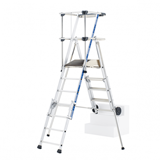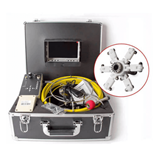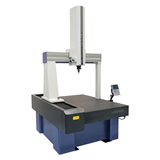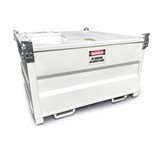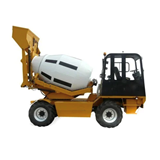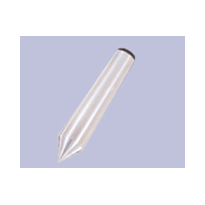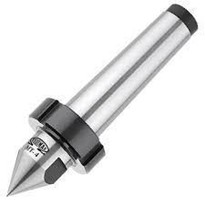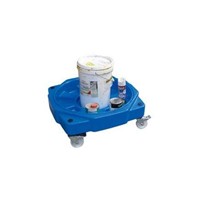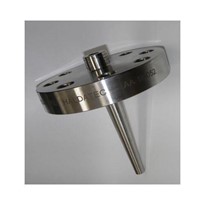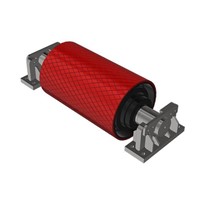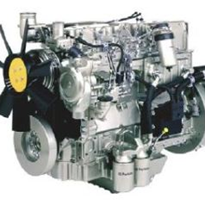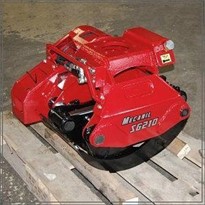Its special design avoids the usual neck in the pipe section for fitting the measuring instrument. The process connection is made via an orbital weld.
Very high demands are made on the hygienic design of the thermometers used in sterile processes. One important principle is that the measuring instruments should record the measured values as precisely as possible; at the same time, their design should comply with all essential requirements for sterile production.
This includes easy cleanability of all components in contact with the products. One key aspect here is self-draining of the instruments to allow the final product residues to drain easily from the pipelines. Where possible, the sensors should be integrated without any dead spaces or crevices in order to avoid deposits or the formation of biofilms and permit residue-free cleaning.
In the case of temperature measuring instruments, the hygienic design requirements can be fulfilled by means of thermowells. Thermo wells additionally prevent contact between the sensor and the medium to be measured. If a replaceable measuring insert is used, the instruments can be calibrated without opening the process. This enables the plant manager to carry out regular calibrations without being obliged to sterilise the plant and validate the cleaning efficiency afterwards. Sterilisation and subsequent validation can lead to significant costs, which often far exceed the value of the measuring instruments. In order to comply with all these demands, Wika has developed a dedicated range of electric thermometers for sanitary applications. A special thermowell that optimally meets all requirements applicable to biotechnological processes is available for integrating the temperature sensors into pipelines. The thermo well is incorporated by orbital welding, which is quick and affordable with a defined, cleanweld seam. No sealing in contact with the product is necessary for the integration in the pipeline.
In view of the costs for high-quality seals and the time and effort for replacing them regularly, plant managers can save several hundred Euros annually per measuring point. Doing away with the seals also allows the operator to minimise the risk of process contamination, or of genetically modified micro-organisms escaping, and thus rules out any pollution of the environment
Optimised hygienic design
The main focus of this optimised hygienic design concerns the novel, patented concept of the process invasive elements with no dead spaces. By impressing the body of the pipe in order to adapt it to the sensor thermowell, the dead spaces that are normally unavoidable during extrusion are eliminated. On the one hand, this prevents any deposits of products or cleaning fluid while on the other, it significantly facilitates emptying and cleaning and thus makes the cleaning process much safer. In short, the hygienic risk that can emanate from a temperature sensor is minimised.
In its instrument class, the thermowell also gives plant engineers considerable leeway regarding the mounting position, as the hygienic design allows draining and cleaning in any orientation. This is an essential benefit that is especially appreciated in applications where space is restricted or with plants that have to be installed compactly. In addition, the measuring points are arranged such that the inserts always have the same length regardless of the pipe diameter. Standardised measuring inserts mean the plant manager no longer has to stock an extensive range of spare parts.
Thanks to the thermowell, the sensor can be installed in the middle of the pipe or the flowing medium. If we take a look at the flow inside pipe – and hence at the temperature distribution in the fluid, even in case of turbulent flow – it can be seen that the temperature is substantially higher at the core of this flow than at the pipe walls. Depending on the flow conditions and the difference between ambient temperature and the temperature of the medium flowing in the pipeline, deviations of 5 kelvins or more are not uncommon. To guarantee accurate measurements, therefore, it is extremely important to record the temperature at the core. Precise process data is a vital precondition of optimal process heat utilisation and minimised energy consumption when the active substances are heated as well as during cleaning and sterilisation.
When designing a temperature measuring point that is easy to clean, attention should be paid to the timely involvement of a suitable instrument supplier as early as the planning phase. It will otherwise be impossible to plan the measuring points for a production plant compliantly with the latest state of the art and leverage the measurement technology and hygienic design efficiently to achieve affordable and safe operation in a biochemical facility.
- Suppliers
- New to IndustrySearch? Book a Demo
- Advertise with us
- Login
- Email Marketing
- Buyers
- Get Quotes
- Articles & Ideas
- Login
- Subscribe to newsletter
- My Details
- Get Quotes
- Automation & Control
- Automotive Workshop Equipment
- Cleaning Equipment
- Construction & Heavy Machinery
- Conveyor Systems & Components
- Cranes & Hoists
- Electrical & Power Generation Equipment
- Electronic Components
- Farming & Agriculture
- Food & Beverage Processing
- Forklifts & Attachments
- Hydraulic & Pneumatic Equipment
- Industrial Materials, Tools & Components
- Industrial Pumps
- IT Hardware & Industrial Computing
- IT Software & Applications
- Laboratory Equipment & Instruments
- Manufacturing & Industrial Equipment
- Material Handling & Lifting
- Metalworking & Machining
- Mining Equipment & Machinery
- Packaging & Labelling Machinery
- Pallet Management
- Personal Protective Equipment
- Security & Surveillance
- Test & Measurement
- Transport Equipment
- Trucks & Trailers
- Warehouse Storage & Racking
- Waste & Environmental Management
- Welding Machines & Accessories
- Woodworking & Joinery Machines
- Workplace Equipment
- Workplace Safety Equipment
- Get Quotes
- Automation & Control
- Automotive Workshop Equipment
- Cleaning Equipment
- Construction & Heavy Machinery
- Conveyor Systems & Components
- Cranes & Hoists
- Electrical & Power Generation Equipment
- Electronic Components
- Farming & Agriculture
- Food & Beverage Processing
- Forklifts & Attachments
- Hydraulic & Pneumatic Equipment
- Industrial Materials, Tools & Components
- Industrial Pumps
- IT Hardware & Industrial Computing
- IT Software & Applications
- Laboratory Equipment & Instruments
- Manufacturing & Industrial Equipment
- Material Handling & Lifting
- Metalworking & Machining
- Mining Equipment & Machinery
- Packaging & Labelling Machinery
- Pallet Management
- Personal Protective Equipment
- Security & Surveillance
- Test & Measurement
- Transport Equipment
- Trucks & Trailers
- Warehouse Storage & Racking
- Waste & Environmental Management
- Welding Machines & Accessories
- Woodworking & Joinery Machines
- Workplace Equipment
- Workplace Safety Equipment
Trusted by 1.2 million Australian industrial buyers
Buyers
- Discover products & solutions
- Login
- Subscribe To Newsletter
- Browse All Products
- Read Articles
Suppliers
Advertise
- Promote your products & solutions
- New to IndustrySearch? Book a Demo
- Login / Forgot Password
- Advertise Your Products
- Success Stories
- Email Marketing
- Suppliers
- Advertise with us
- Login
- Email Marketing
- Buyers
- Get Quotes
- Articles & Ideas
- Login
- Subscribe to newsletter
- My Details
Get Quotes
- Automation & Control
- Automotive Workshop Equipment
- Cleaning Equipment
- Construction & Heavy Machinery
- Conveyor Systems & Components
- Cranes & Hoists
- Electrical & Power Generation Equipment
- Electronic Components
- Farming & Agriculture
- Food & Beverage Processing
- Forklifts & Attachments
- Hydraulic & Pneumatic Equipment
- Industrial Materials, Tools & Components
- Industrial Pumps
- IT Hardware & Industrial Computing
- IT Software & Applications
- Laboratory Equipment & Instruments
- Manufacturing & Industrial Equipment
- Material Handling & Lifting
- Metalworking & Machining
- Mining Equipment & Machinery
- Packaging & Labelling Machinery
- Pallet Management
- Personal Protective Equipment
- Security & Surveillance
- Test & Measurement
- Transport Equipment
- Trucks & Trailers
- Warehouse Storage & Racking
- Waste & Environmental Management
- Welding Machines & Accessories
- Woodworking & Joinery Machines
- Workplace Equipment
- Workplace Safety Equipment
Get Quotes
- Automation & Control
- Automotive Workshop Equipment
- Cleaning Equipment
- Construction & Heavy Machinery
- Conveyor Systems & Components
- Cranes & Hoists
- Electrical & Power Generation Equipment
- Electronic Components
- Farming & Agriculture
- Food & Beverage Processing
- Forklifts & Attachments
- Hydraulic & Pneumatic Equipment
- Industrial Materials, Tools & Components
- Industrial Pumps
- IT Hardware & Industrial Computing
- IT Software & Applications
- Laboratory Equipment & Instruments
- Manufacturing & Industrial Equipment
- Material Handling & Lifting
- Metalworking & Machining
- Mining Equipment & Machinery
- Packaging & Labelling Machinery
- Pallet Management
- Personal Protective Equipment
- Security & Surveillance
- Test & Measurement
- Transport Equipment
- Trucks & Trailers
- Warehouse Storage & Racking
- Waste & Environmental Management
- Welding Machines & Accessories
- Woodworking & Joinery Machines
- Workplace Equipment
- Workplace Safety Equipment
Trusted by 1.2 million Australian industrial buyers


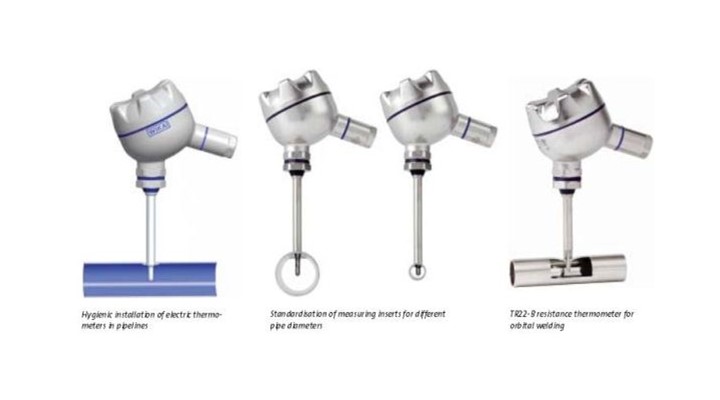
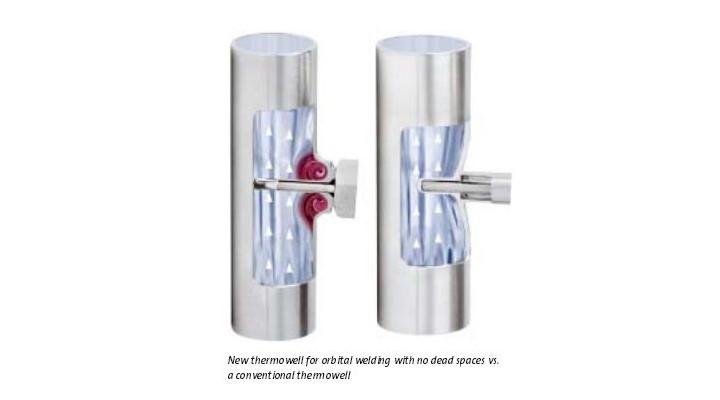
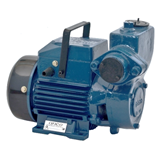
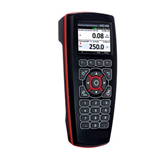

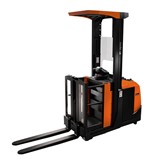




-160x160-state_article-rel-cat.png)
